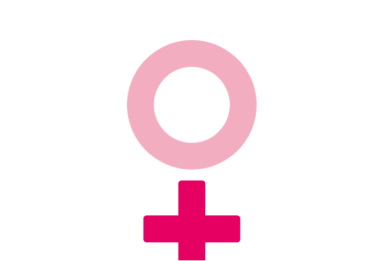Post Abortion Care (PAC) Model

Post-abortion care is an important intervention to address complications related to spontaneous and induced abortion through improving treatment and linking women to family planning and other reproductive health services.
PAC, as a part of a larger reproductive health strategy, can be vital in reducing the unmet need for family planning, which can prevent future unplanned/mistimed pregnancies, decrease the incidence of repeat abortion, and decrease maternal morbidity and mortality. The core components of the PAC model are as follows:
- Emergency treatment for incomplete abortion and the complications of spontaneous or induced abortion.
- Family planning counseling and service provision.
- Community empowerment via community awareness and mobilization.
Rapid Initial Assessment
The first step in providing care to a woman suspected of having an incomplete or missed abortion is to assess her clinical situation.
This is necessary to make a diagnosis and initiate any emergency and medical treatment. The initial assessment may reveal or suggest the presence of immediate life-threatening complications such as shock, severe vaginal bleeding, infection/sepsis or septic shock, or intra-abdominal injury (e.g., uterine perforation).
These problems should be addressed immediately to save the patient’s life or keep her condition from worsening. In the presence of these conditions, the patient should be stabilized to ensure she is no longer in danger, gets emergency treatment, and/or is referred appropriately. Even without complications, incomplete or missed abortion can become life-threatening if definitive treatment (medical or removal of any retained products of conception) is delayed.
Clinical History and Examination of PAC Client
Providers should consider the possibility of an abortion-related condition in any woman who presents with vaginal bleeding or abdominal pain.
Symptoms of possible miscarriage or induced abortion include the following in any woman of reproductive age:
- Amenorrhea, more than a month has passed since her last menstrual period (LMP)
- Known or suspected pregnancy
- Onset of vaginal bleeding, may be heavy or light, may be accompanied by passage of clots or tissue fragments.
- Cramping or lower abdominal pain like menstrual cramps or labor contractions.
The next step after the initial assessment is to determine the cause of vaginal bleeding. Taking a thorough reproductive history, performing careful physical and pelvic examinations, and, when necessary, obtaining appropriate laboratory tests are important in making an accurate diagnosis and treatment plan.
Post-abortion family planning
Receiving post-abortion services may be one of the few points of contact with the health care system for many women.
It is an important opportunity to provide contraceptive information and services to all women during PAC services before they leave the facility. Post-abortion family planning uptake is increased when services are provided in the same place as treatment and when couples are counseled together regarding family planning options.
Post-abortion family planning should include essential elements of good family planning care:
- Provision of information and counseling about methods, their characteristics, effectiveness, and limitations (including side effects).
- Helping women choose a method.
- Providing women, the method of her choice, preferably on the day of treatment.
- Access to follow-up care and other referrals as needed.
Counseling
During counseling, all clients should be informed of the following:
- She can become pregnant again before the next menses, as fertility returns in as little as 7–10 days.
- There are safe methods to prevent or delay pregnancy that can be used immediately.
- The risk for an adverse outcome to pregnancy, including repeat miscarriage, should she wish to have a baby, is less when there is an interval of at least six months between this miscarriage and her next pregnancy.
- Pregnancies of women younger than 18 years old are considered high risk.
Post-abortion family planning when there are no complications:
- Consider all temporary and long-acting methods, depending on the woman’s reproductive intentions.
- Provide counseling and start the methods immediately; on the day of treatment; before the woman leaves the facility.
- Progestin-only implants can be used immediately.
- Injectables (DMPA, NET-EN): can be used immediately.
- IUD: can be used immediately after MVA; at a follow-up visit after misoprostol treatment.
- Oral contraceptives (combined or progestin-only): can be used immediately.
- Condoms: can be used when sexual activity is resumed. Use for dual protection with another method.
If there is Confirmed or presumptive diagnosis of infection, use:
- Progestin-only implants (Jadel, Implanon): can be used immediately.
- Injectables (DMPA, NET-EN): can be used immediately.
- Oral contraceptives (combined or progestin-only): can be used immediately and for dual method use.
- Condoms: can be used when sexual activity is
If you’re starting to use contraception for the first time, or thinking about using a new method, it’s a good idea to have a full consultation
WhatsApp us for a confidential chat












